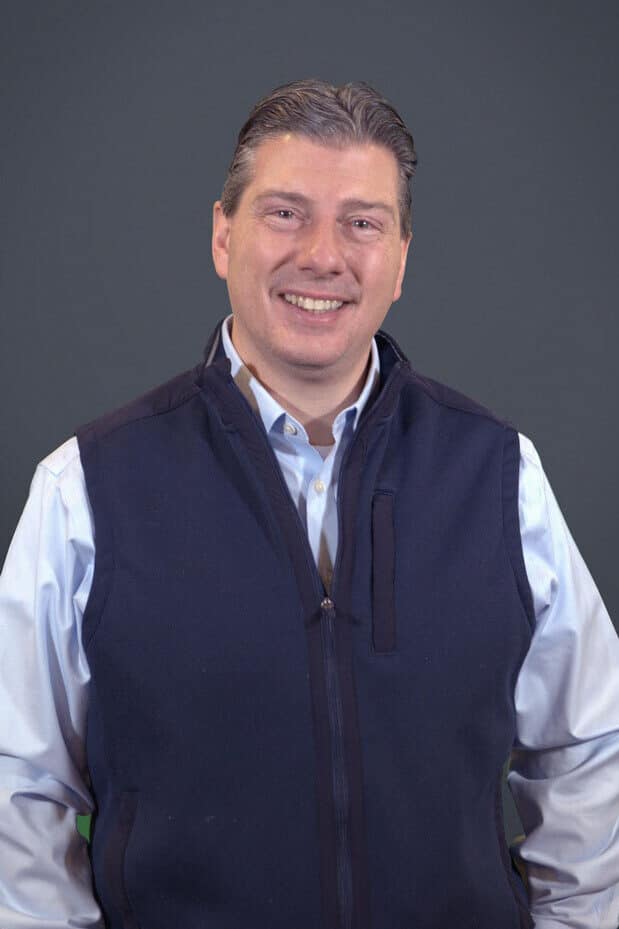When it comes to tackling the increasingly complex problems of 21st-century banking like sanctions, AML, and KYC, who better to partner with than someone who’s been in your shoes? Before our new VP of Financial Crime, Arthur Mueller, joined WorkFusion, he spent more than 20 years in anti–financial crime programs across multiple FIs, including UBS, American Express, and Rabobank — dealing with the very same pain points as our customers.
We sat down with Art to talk about his former roles, how he leverages his industry intel today at WorkFusion, and his mission to solve the toughest problems in banking — not only for our customers, but the industry at large. This interview has been edited for length and clarity.

WorkFusion: Hi Art, welcome to WorkFusion! To begin, can you tell us about your past experience in banking and finance?
Arthur Mueller: Thank you! Yes, I bring more than 20 years of experience in anti–financial crime programs across a number of financial institutions, including American Express, UBS, Commerzbank, and Rabobank. I spent over 6 years as the AML and Sanctions Officer for Rabobank North America, running a program with over 40 professionals.
WF: So you’ve been in this space for a while. How do you think your previous roles might have been affected if you’d had WorkFusion/our Digital Workers on your side?
AM: Digital Workers would have certainly benefited my prior teams by automating mundane and rote tasks, and freeing up my staff to engage in more impactful work for the financial crime program. It would have helped with the quality of the task being performed, especially when using Digital Workers like Tara and Evelyn. Each performs consistently within the bounds of the model, providing appropriate dispositions of alerts with clear and concise narratives as to why it made the decision it did.
My staffing needs would have been more easily addressed given the speed of deployment and scalability to intake and adjudicate a growing number of alerts. We wouldn’t have had to wait for recruitment, onboarding, and training of new analysts, which can take months and comes with its own set of risks like backlogs, overworked staff, SLA delays and misses, and possible remediation efforts at a later date.
The onboarding and training of new analysts typically takes around six months before they become self-sufficient with passing quality scores. Plus it requires the help and training of current employees, who have to drop their own work, which again may lead to backlogs, missed SLAs, and they may themselves become distracted and miss an escalation. You actually minimize these risks with Tara and Evelyn, who are ready to go pretty much out of the box.
WF: What motivated you to join WorkFusion?
AM: There were many reasons, including working with an incredible team. But two reasons jump out to me. First, I wanted to work towards making change across the industry. We have to change some of the old ways of thinking about how tasks and processes are performed, especially the more rote processes that are ripe for automation and machine learning — screening, alerts disposition, and document processing. Our regulators want us to innovate and look to new ways to perform these old processes. The AML Act of 2020 made this abundantly clear, especially coupled with FinCEN’s Innovation Initiative and the recent release of the Wolfsberg Group’s principles on artificial intelligence and machine learning. At WorkFusion, I can make an impact across the industry and not just at one financial institution.
Second, I found WorkFusion to be at the cutting edge of AI and machine learning for the financial services industry, particularly for anti–financial crime. WorkFusion has productized AI and machine learning, creating a number of out-of-the-box solutions to screening, CIP and KYC, customer service, and customizable solutions where needed. I found the AI and machine learning platform to be unique and extremely powerful.
WF: How will you be helping to solve the problems that you used to face in your former roles?
AM: I understand and empathize with AML Officers, Operations Officers, and senior management in the financial industry. I’ve done what they’re doing. I’ve faced the same challenges, whether it’s managing the risk and controls in the financial crime program; doing more with less; or, moving quickly enough to address issues like onboarding replacement staff. And on top of all that, ensuring current staff is not getting burned out, which is a real issue in the AML and sanctions space.
I truly believe the industry needs to innovate and move more to AI and machine learning, and the WorkFusion Digital Workers are a big step in that direction. We’ve had decades of doing the same processes, and we need to break that cycle. The WorkFusion Digital Workers are productized AI and machine learning, and can be delivered and deployed quickly, performing out-of-the-box with little customization. They learn effectively to better perform the job in the future, and provide scalability to financial institutions presenting more options as they continue to grow.
And most importantly, I believe the move to AI and machine learning allows a financial institution to better manage risks given that speed of deployment, scalability, consistent approach to the process, and the effective learning of the model.

We have to change some of the old ways of thinking about how tasks and processes are performed, especially the more rote processes that are ripe for automation and machine learning — screening, alerts disposition, and document processing. Our regulators want us to innovate and look to new ways to perform these old processes.

WF: How do you see yourself utilizing your past experience in your new role here at WorkFusion?
AM: I look at this a couple ways. First, I empathize and understand the challenges of our customers and prospects. My experience will allow me to talk to clients, understand where their pain points are, and work with them to identify the right solution to answer their needs.
Second, I’ll be working with the WorkFusion Product team to enhance the current Digital Workers and develop new ones. In my prior roles, I would attend demos of products and I would always be asking can it do this or can it do that? I’ll bring that same perspective to the work with the Product team.
WF: How do you think that WorkFusion customers might benefit from your experience in their shoes?
AM: I bring a wealth of knowledge on regulators’ expectations, including model risk management in the financial crime space and on how to manage people, processes, and technology across a program. I’ve seen and done this across multiple financial institutions. I’ve seen what works and what doesn’t. I’m always willing to bring that perspective to our clients to help them find the most appropriate solutions to their problems.
WF: Let’s close by zooming out. From your perspective, what is the biggest problem WorkFusion is solving for banking today, and even looking ahead a couple years?
AM: To me this is rather simple. It’s addressing the risk that the banking industry faces. In my opinion, our Digital Workers and platform will lower risk in a financial institution. As I noted earlier, the speed of deployment, scalability, consistent approach to the process, and effective machine learning will allow FIs to more effectively manage financial crime risks. I believe that maintaining the status quo and continuing the current cycles — hiring, onboarding, training, retraining, and then starting it all over again once an analyst leaves — are bigger risks to a financial institution than deploying Digital Workers and other custom-built AI and machine learning solutions by WorkFusion.
Read other installments of the “From Finance to Fintech” Q&A series, featuring our Head of Financial Crimes Strategy, Grant Vickers, Global Head of Customer Lifecycle Management, Daniel Hazel, and stay tuned for upcoming installments.
To learn more about our AI-enabled Digital Workers, please schedule a demo.






























